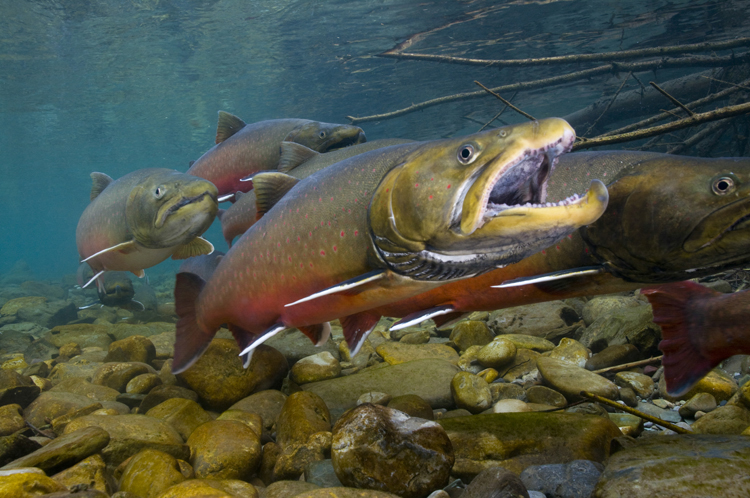Restrictions on bull trout fishing in Lake Koocanusa are set to tighten as biologists with Montana Fish, Wildlife and Parks propose eliminating harvests of the threatened native species amid concerns over spawning declines in a historic stronghold.
Bull trout are listed as a threatened species under the federal Endangered Species Act, but a special arrangement with the U.S. Fish and Wildlife Service allows some limited harvests in Lake Koocanusa and Hungry Horse Reservoir, as well as the management of a catch-and-release fishery in the South Fork Flathead River.
Currently, harvest is limited on Lake Koocanusa to a single fish per license year running from June 1 through Feb. 28, with catch-and-release fishing allowed the rest of the year (targeting bull trout is prohibited in most fisheries).
FWP is proposing catch-and-release fishing all year with no harvest beginning at the season opening, March 1, 2020. Anglers would still need to possess Lake Koocanusa “Bull Trout Catch Cards” when targeting bull trout.
According to FWP officials, the recommendation is due to a decline in bull trout spawning in Lake Koocanusa.
“Bull trout redd counts in the fall are used as an important metric for measuring bull trout reproduction and recruitment and are included as part of the requirements for the harvest permit,” according to an FWP memorandum.
For the Lake Koocanusa bull trout population, redd counts in the Wigwam River in British Columbia and Grave Creek in Montana are critical to determine harvest quotas.
Over the past six years, redd counts had been fairly steady in both streams.
However, in the fall of 2019, spawning redds in both streams declined substantially, according to the memo, prompting concerns that limited angler harvest may have population-scale impacts.
“This action is based on one year of data from two primary spawning tributaries to Lake Koocanusa,” according to an agenda item slated to go before the Montana Fish and Wildlife Commission for a vote on Jan. 6.
“It is possible that unknown sampling variables or limiting factors could have depressed 2019 counts,” the memo states. “But, since counts are down in both tributaries and based on a conservative management approach regarding harvest, the department believes it is appropriate to limit harvest until redd counts improve.”
There was no period for public involvement on the decision, and because of the threatened status of bull trout, FWP “prefers to take a very conservative approach to bull trout management while still allowing opportunities to harvest bull trout.”
Bull trout were listed as “threatened” by the U.S. Fish and Wildlife Service in 1998. Declines in bull trout abundance and distribution have been caused by habitat loss and degradation from land and water management practices; population isolation and fragmentation from dams and other barriers; competition, predation and hybridization with introduced non-native fish species (lake trout, northern pike, brook trout and others); historical overharvesting; and poaching.
Although their numbers and distribution have declined from historic levels, bull trout populations exhibiting resident and migratory life histories can be found throughout their historic range in Montana.
